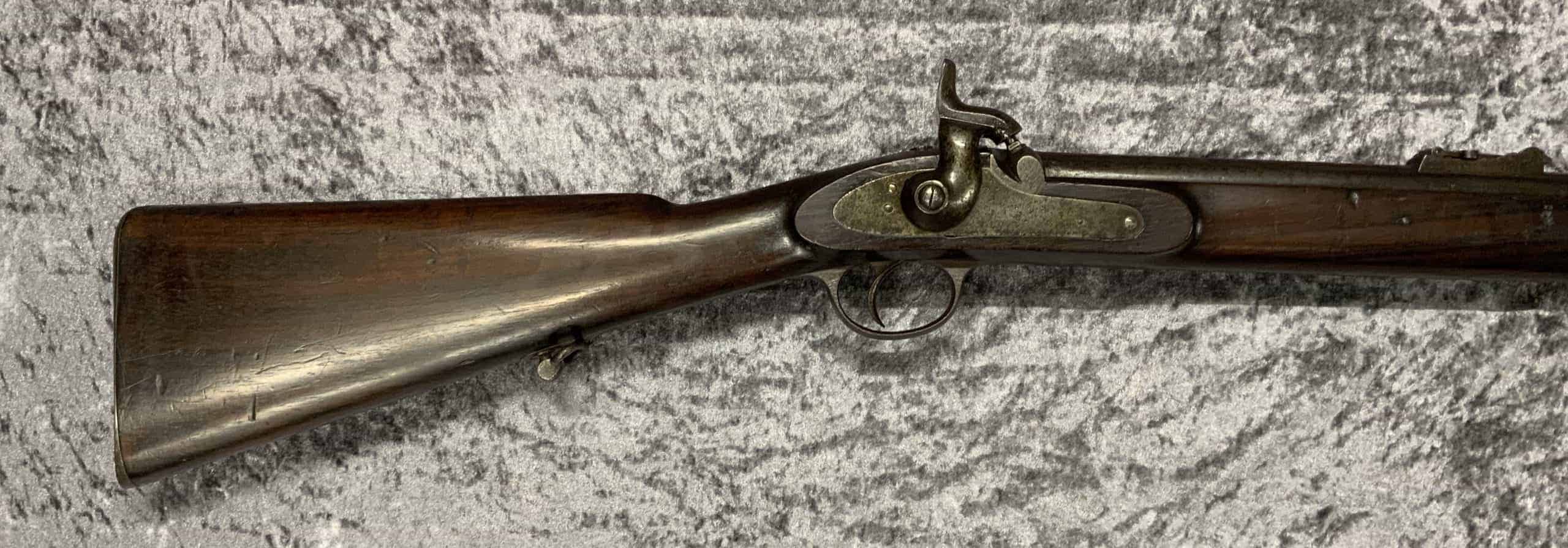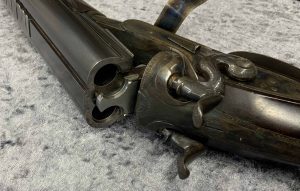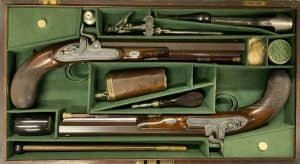Description
Enfield Whitworth
A very rare Enfield Whitworth. Lock marked B.S.A & Co 1865 with a Whitworth Patent barrel in .451. Hexagonal rifling. The bore is reasonable & the gun is in nice original condition
During the 1850s and 1860s the British service rifle calibre was .577, both for the muzzle-loading Enfield rifle and its breech-loading successor the Snider (a conversion of the Enfield). Early manufacture of the Enfield relied on much hand labour and consequently lead to problems of inconsistent performance, non-interchangeability of parts and slow supply. Joseph Whitworth was approached to provide assistance with regards to the design of appropriate machinery for its manufacture.
Joseph Whitworth was the foremost manufacturer of machine tools of his time. Not content with considering the machinery for the manufacture of the rifle, he determined that a more appropriate course of action would be to establish that the proposed rifle was of optimum design before considering its mass production. In Whitworth’s 1873 book, ‘Guns and Steel’, he writes:
“IN the year 1854, when Lord Hardinge (the then Commander-in-Chief) was endeavouring to obtain the best possible rifle with which to arm the British troops, he requested me to aid him by investigating the mechanical principles applicable in the construction of an efficient weapon. I willingly agreed to do so, subject, however, to the condition that I should have a suitable gallery, protected from changes in the wind and from fluctuations in the atmosphere, wherein to carry on the experiments which were necessary for enabling me to arrive at any sound conclusion.
“It was absolutely essential to track the path of a rifle bullet throughout its entire course, to determine whether its point preserved a true forward direction, and to record its trajectory. This could be done most readily in a closed gallery provided with screens of very light tissue paper.
“Accordingly a gallery, 500 yards in length, was erected in my grounds at Rusholme (Manchester), in the year 1855. Its height was 20 feet and width 16 feet; it was slated, and had openings on the south side only for the admission of light and for getting rid of the smoke.”
The only design criteria Whitworth had was restriction to the service charge of 70 grains with a 530 grain weight bullet. The conclusion of his experiments was that the optimum bore for the charge and weight bullet specified would be .45 cal with a 1 in 20” twist to the rifling.
Click here for more Antique Arms








